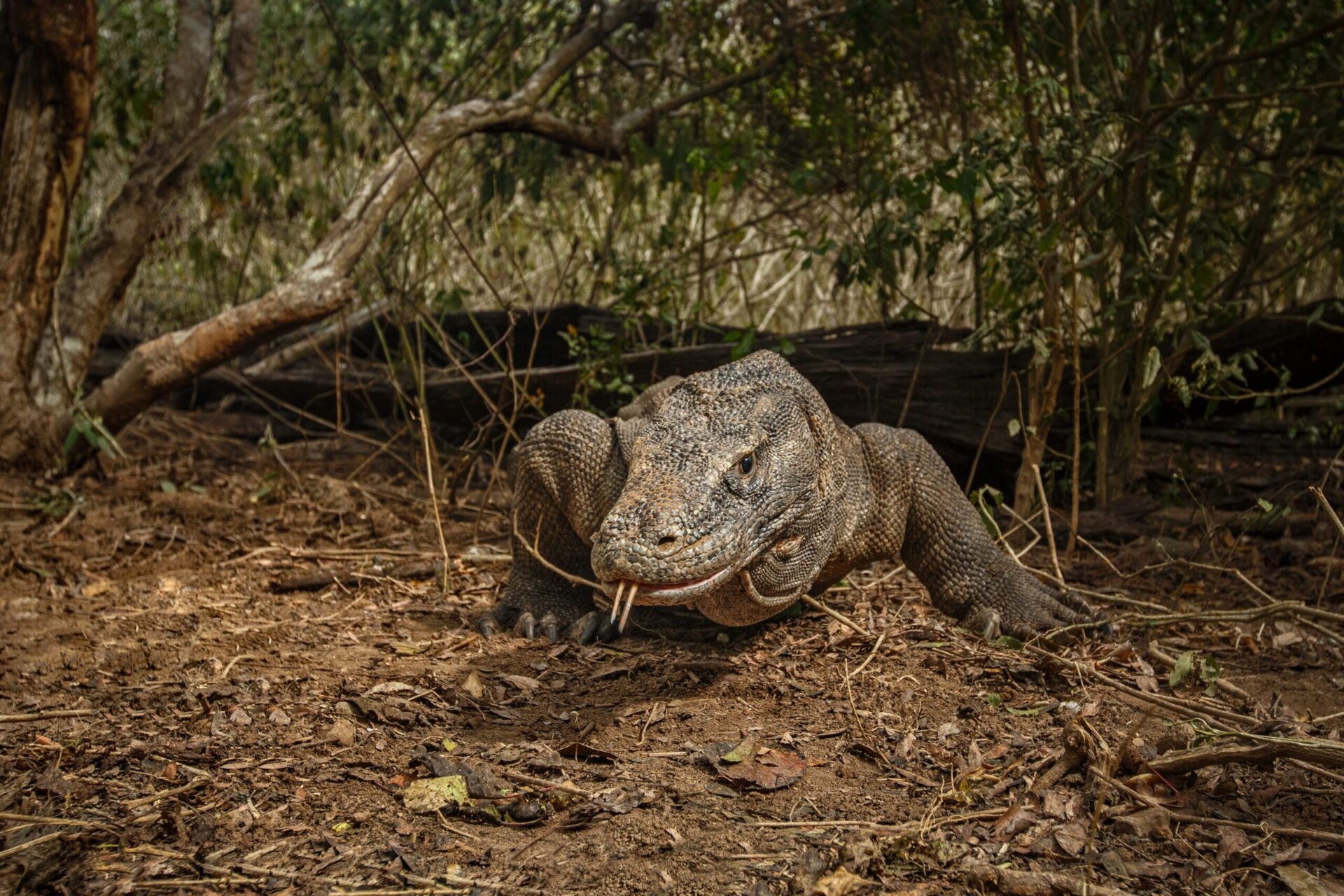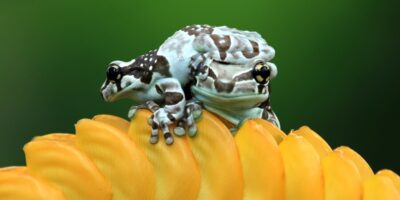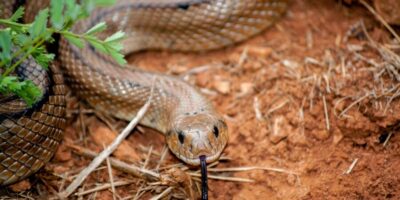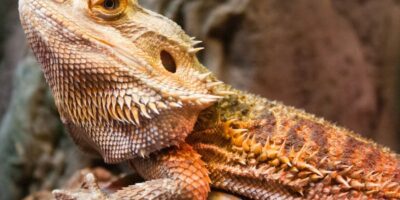Ackie Monitors, also known as Spiny-tailed Monitors, has earned a well-deserved place in the hearts of reptile enthusiasts as popular and fascinating pet reptiles. These small, active, and intelligent lizards are native to arid regions of Australia, making them a unique and captivating addition to the world of herpetoculture.
In raising Ackie Monitors as pets, one of the most critical aspects to grasp is their growth trajectory. From the moment they hatch to adulthood, understanding how big these monitors get is crucial for providing them with the best possible care. As responsible reptile keepers, we must ensure their well-being, and that begins with an awareness of their growth patterns.
Natural habitat and characteristics of Ackie Monitor
Ackie Monitors, scientifically known as Varanus acanthurus, are captivating reptiles native to the arid regions of Australia. These monitors are renowned for their unique characteristics, including striking patterns of spots and bands on their bodies and the distinctive spiny tail that lends them their name.
They are small to medium-sized lizards, making them a more manageable option for reptile enthusiasts in comparison to larger monitor species.
Their appealing size, vibrant personalities, and fascinating behaviors have made Ackie Monitors increasingly popular in the pet trade. These reptiles have a knack for forming bonds with their keepers and often display a curious and active nature.
Their manageable size and relatively easy care requirements have contributed to their reputation as excellent reptile pets, suitable for both novice and experienced herpetoculturists. Understanding their natural habitat and characteristics is the first step in providing these remarkable creatures with the care and environment they need to thrive in captivity.
Hatching Stage
When Ackie Monitors first emerge from their eggs, they are nothing short of miniature marvels. Hatchlings typically measure around 4 to 6 inches (10 to 15 cm) in length, sporting a stunning array of colors, with shades of red, yellow, and orange on their bodies. Their scales often display a mesmerizing pattern of spots and bands, characteristic of the species. However, these tiny reptiles are incredibly vulnerable in their early days. Their small size makes them susceptible to dehydration, temperature fluctuations, and predators.
To ensure their well-being, it’s crucial to provide them with a carefully controlled and secure environment. Proper housing, such as small, escape-proof enclosures with appropriate heating and humidity, is essential to safeguard their health. Feeding young Ackie Monitors requires careful consideration as well.
They have hearty appetites and should be offered a diet of appropriately-sized prey items, including insects and occasionally small pinky mice. Nutrient-rich food is vital for their growth and development at this critical stage. Investing time and care during the hatching stage sets the foundation for healthy and thriving Ackie Monitors as they progress through their growth phases.
Juvenile Stage
The juvenile stage is an exciting phase in the Ackie Monitors Growth rate. During this period, they experience notable growth and development, reaching lengths of around 12 to 18 inches (30 to 45 cm) or more, depending on various factors such as diet and habitat conditions. Their colors become more vibrant, and they begin to exhibit their distinctive personalities.
Behaviorally, juvenile Ackie Monitors are exceptionally active and curious. They explore their environment, burrow, climb, and bask. It’s essential to provide them with an enriched enclosure that caters to these behaviors, including hiding spots, branches, and climbing opportunities. Diet plays a pivotal role in their growth during this stage. Their diet should consist of a variety of prey items such as insects, small vertebrates, and, occasionally, some plant matter. Offering a diverse diet ensures proper nutrition and contributes to their overall health and development.
Sub-Adult Stage
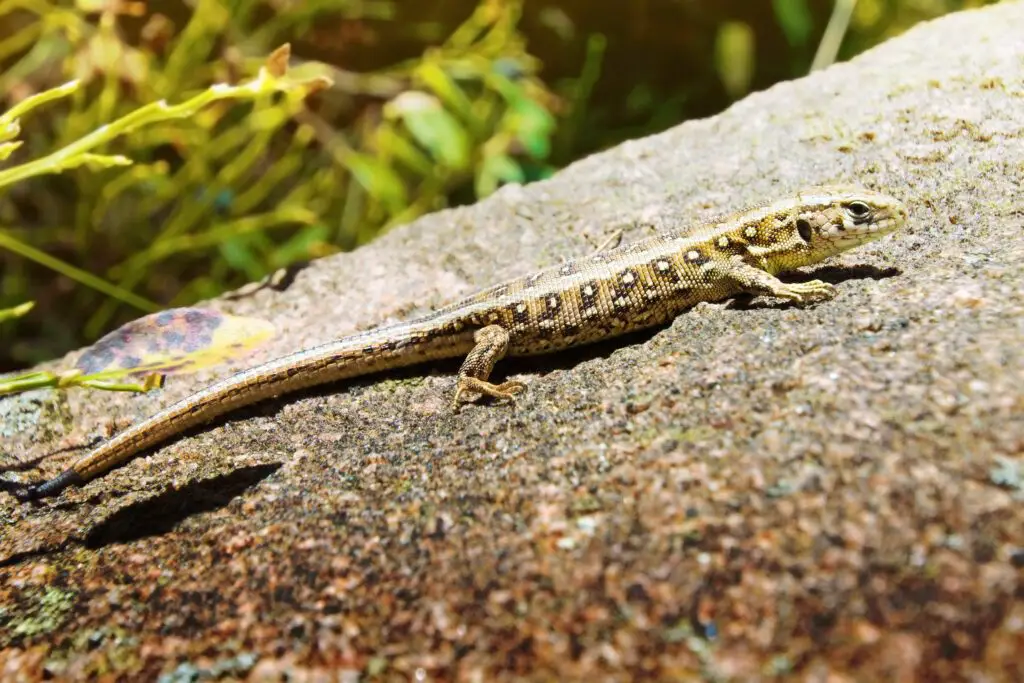
The transition from juvenile to sub-adult Ackie Monitors is a remarkable period of change and growth. During this stage, Ackies typically reach sizes ranging from 18 to 24 inches (45 to 60 cm) or more, and their physical attributes undergo noteworthy alterations. The coloration of sub-adults intensifies, with richer hues and more prominent patterns, making them increasingly attractive.
Behaviorally, sub-adult Ackie Monitors exhibit a shift toward more distinct personalities. Some become more territorial, while others may display a calmer disposition. Understanding these individual variations is crucial for providing appropriate care. Nutrition remains paramount during the sub-adult stage. Their diet should include a balance of insects, small vertebrates, and occasional plant matter.
Monitoring their weight and adjusting feeding schedules accordingly is vital to prevent overfeeding or underfeeding. With their growing size and more defined behaviors, sub-adult Ackie Monitors require larger enclosures with ample space for exploration, basking, and exercise. These accommodations should maintain a gradient of temperature and humidity, allowing them to thermoregulate effectively.
Adult Stage
As Ackie Monitors reach adulthood, they attain their full size, which typically ranges between 20 to 28 inches (50 to 70 cm), making them one of the more manageable monitor species. Their coloration becomes even more vivid and intricate, displaying striking patterns of spots and bands. Adult Ackies also exhibit established temperaments, with some individuals becoming more social and others remaining more reserved.
Understanding and respecting these personality differences is essential for successful interaction with these reptiles.
Long-term care for adult Ackie Monitors involves providing a spacious enclosure that allows for their natural behaviors. Enclosures should be suitably sized, typically measuring at least 4×2 feet (120×60 cm), and equipped with branches, burrowing opportunities, and proper heating elements to meet their thermoregulatory needs. In terms of diet, adults require a well-rounded and varied menu of insects, small vertebrates, and, to a lesser extent, plant matter.
Consistently monitor their dietary needs and adjust accordingly to maintain their health. To ensure the happiness and health of adult Ackie Monitors, it’s vital to maintain clean enclosures, provide proper lighting, offer regular enrichment opportunities, and engage in regular health assessments. These actions collectively contribute to a fulfilling life for these captivating reptiles in captivity.
Growth Timeline
Understanding Ackie Monitors’ growth timeline is crucial for providing them with the best care possible. While individual growth rates may vary, a rough timeline of their development can be outlined.
- Hatching Stage (0-3 months): At birth, Ackie Monitors measure approximately 4 to 6 inches (10 to 15 cm). During this stage, they are most vulnerable, and careful care is required.
- Juvenile Stage (3-12 months): As they transition from hatchlings to juveniles, their size increases to around 12 to 18 inches (30 to 45 cm). They become more active, inquisitive, and colorful.
- Sub-Adult Stage (1-2 years): This stage witnesses further growth, with sub-adult Ackies reaching sizes of 18 to 24 inches (45 to 60 cm) or more. Their coloration becomes more vibrant, and their behavior more distinct.
- Adult Stage (2+ years): By the time they reach adulthood, typically at two years or older, Ackie Monitors achieve their full size, ranging between 20 to 28 inches (50 to 70 cm). Their coloration and temperament become well-established.
Common Growth
Ackie Monitor owners may encounter a variety of challenges during the growth process, but understanding and addressing these issues is crucial for their well-being. Common challenges include:
Some individuals may be picky eaters or refuse to consume a balanced diet. To overcome this, try offering a variety of prey items dusted with calcium and other essential supplements, and consider gut-loading insects for added nutrition.
Inadequate housing, nutrition, or temperature regulation can lead to stunted growth. Ensure that their enclosure size is appropriate for their life stage, maintain optimal temperatures and humidity, and monitor their diet closely to avoid underfeeding or overfeeding.
As they reach adulthood, some Ackie Monitors can become territorial or aggressive. Providing ample space and hiding spots can help mitigate this issue. Separating incompatible individuals may also be necessary.
Ackie Monitors can be prone to dehydration, especially when young. Ensure they have access to a shallow water dish for drinking and humidity maintenance. Regular misting can also help maintain proper humidity levels.Skin and Shedding Problems: Difficulty shedding, commonly due to insufficient humidity, can be an issue. To assist with shedding, create a humid hide in their enclosure and provide gentle misting or soaking as needed.
Conclusion
The growth of Ackie Monitors from hatching to adult size is a captivating journey. These remarkable reptiles go through various stages of development, each with its own unique characteristics and care requirements. Understanding their growth timeline, monitoring their well-being, and adapting their care are essential for responsible pet ownership.
As keepers of these fascinating creatures, it’s our duty to provide them with the proper environment, nutrition, and attention they need to thrive. Ackie Monitors can live long, healthy lives when given the care they deserve. By ensuring their well-being, we not only enjoy the privilege of sharing our lives with these incredible reptiles but also contribute to the preservation and appreciation of these remarkable species.
